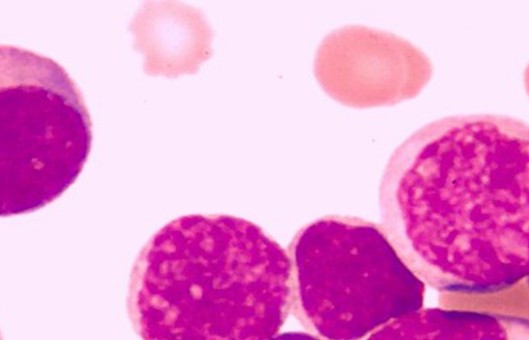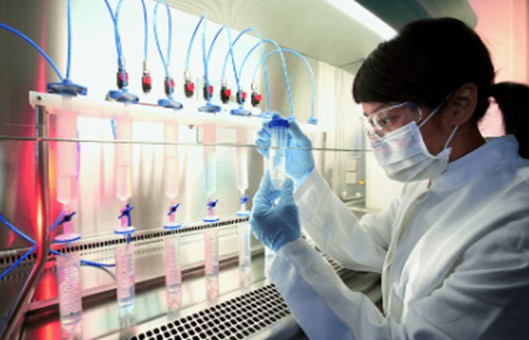GUIDELINE
- The ultimate result of a gene expression is the production of the corresponding protein (or enzyme). Therefore, the detection of proteins is the main marker of gene expression, and there are many methods to detect proteins, except for ELISA, but also blotting methods similar to the detection of DNA and RNA. The first two methods have the meaning of "south" and "north", so the method was extended to Western (western) blotting, which can be distinguished by SDS polyacrylamide gel electrophoresis with specific proteins bound to a specific antiserum.
- The proteins resolved on the polyacrylamide gel are transferred to a nitrocellulose membrane and co-incubated with the primary antibody. The first antibody binds specifically to the antigenic determinant cluster of the egg mass to be isolated, and the bound antibody is then detected with another egg mass, such as 135I-protein A or horseradish peroxidase-conjugated goat anti-IgG. The time required for this method is 6 hours or overnight.
METHODS
Sample Preparation
- Melt the RIPA lysate and mix well. Take the appropriate amount of lysate and add PMSF within minutes before use to make the final concentration of PMSF 1 mM.
- Remove the culture medium and wash over with PBS, saline, or serum-free culture medium. Add lysate according to the ratio of 150-250 μL lysate per well of a 6-well plate. Blow several times with a gun to make full contact between lysate and cells. There should be no obvious cell precipitation after the cells are fully lysed.
- Collect the cells by centrifugation, and pop the cells apart vigorously with your fingers. Add lysate at a ratio of 150-250 μL of lysate per cell per well of a 6-well plate. Flick the cells again with your finger to fully lyse the cells. There should be no obvious cell sedimentation after sufficient lysis. If the number of cells is large, they must be divided into 0.5-1×106 cells/tube before lysis.
- Add lysate at a ratio of 150-250 μL lysate per 20 mg tissue. Homogenize with a glass homogenizer until fully lysed.
- After sufficient lysis, centrifuge at 10000-14000 g for 3-5 min and remove supernatant, ready for subsequent PAGE, Western, and immunoprecipitation operations.
- Prepare the BSA standard system. The standard dilution solution is the solubilization solution of the protein sample. In principle, in whatever solution the protein sample is in, it is also appropriate to dilute the standard with whatever solution. However, it can also be diluted with 0.9% NaCl or PBS.
- Take 25 μL of the standard or the sample to be tested and add it to the microplate.
- Add 200 μL of BCA working solution to each well and shake for 30 s to mix thoroughly. Cover the microplate and incubate at 37°C for 30 min.
- Cool to room temperature and detect the absorbance at 540-595 nm wavelength range on the enzyme standard, where 562 nm wavelength is the best.
- Based on the absorbance of the BSA standard (minus the OD of the blank wells in the standard which is the final reading), draw a standard curve (X-protein concentration ug/mL; Y-final OD 562 nm). The sample protein concentration is calculated based on the standard curve and the dilution of the sample.
Creative Bioarray Relevant Recommendations
SDS-PAGE Electrophoresis
- Cut open the package to take out the preformed gel, tear off the blue tape at the bottom of the gel plate, slowly pull out the comb, fix the preformed gel in the electrophoresis tank, fill the inner tank with electrophoresis buffer, and add the liquid in the outer tank to be higher than the height of the tank by 1/3. A pipette gun or other tools can be used to suck up the electrophoresis buffer to gently blow the spiking hole to remove the residual storage buffer and impurities in the spiking hole.
- Dissolve the 5×SDS-PAGE loading buffer in a water bath at room temperature or no more than 37°C. Store at room temperature immediately after water bath dissolution.
- Mix protein samples and 5×SDS-PAGE Protein Loading Buffer at a ratio of 1 μL 5×SDS-PAGE Protein Loading Buffer per 4 μL protein sample.
- Heat at 100°C or boiling water bath for 3-5 min to fully denature the protein, and then cool to room temperature and set aside.
- Sample 10-30 μg protein in each sample well, and sample protein marker in 1 well, cover the electrophoresis tank lid, turn on the power, recommend 150 V, run for 30-40 min and usually stop electrophoresis until the blue dye reaches near the bottom of the gel.
- At the end of electrophoresis, remove the gel, use a gel starter or other suitable tool to insert it into the gap between the two sides of the gel plate, slowly pry up and down at three different positions, middle and bottom, and then repeat the operation on the other side until both sides of the gel plate are completely open.
- After the gel plate is opened, the gel may stick to either side of the plate. Tilt the gel plate with the gel side into the water, gently poke the gel so that the gel falls freely into the vessel with water, shake it to clean the gel, and then remove it for subsequent transfer experiments.
Transform and Closure
- Equilibrate the gum in pre-chilled transfer buffer for 5 min.
- Cut 6 pieces of membrane and filter paper according to the size of the gel, and equilibrate them in the pre-chilled transfer buffer for 10 min. If PVDF membrane is used, refer to the instruction manual and soak them in pure methanol for 1-2 min before incubating them in the pre-chilled transfer buffer.
- Assemble the transfer sandwich, sponge/3 layers of filter paper/gum/membrane/3 layers of filter paper/sponge, after each layer is placed, use a test tube to drive out the air bubbles.
- Place the transfer bath in an ice bath, put the sandwich with the membrane close to the anode and the gum close to the cathode, add transfer buffer (300 mA, 60 min), or use a fast transfer solution (400 mA, 15-35 min).
- At the end of the transfer, cut off the power and remove the membrane.
- Submerge the membrane in 5 mL of Rejuveno Red staining solution and place on an orbital shaker for 5-10 min or longer at room temperature until protein bands appear on the membrane.
- Remove the membrane and rinse with distilled water, PBS, or other appropriate solutions until the background is clear, and then take pictures, about 2-3 times for 5 min each time.
- Put the membrane into 0.1N NaOH solution and rinse for 5 min, pour off the eluate, and repeat.
- Wash the membrane again with distilled water 2-3 times, each time for 5 min.
- Place the membranes in 25 mL of closure buffer and incubate for 1 h at room temperature or use fast closure solution (10 min).
- Wash three times with 5 mL TBST for 15 min each.
Antibody Incubation
- Incubate the membrane and primary antibody (at the recommended dilution for the product application) in 10 mL of primary antibody dilution buffer overnight at 4°C with occasional gentle shaking.
- Wash three times with 5 mL TBST for 15 min each to remove residual primary antibody.
- Incubate the membrane and secondary antibody (at the recommended dilution for the product application) in 10 mL of blocking buffer for 1-2 hours with occasional gentle shaking.
- Wash three times with 5 mL TBST for 15 min each.
Protein Detection
- While washing the membrane for the last time, freshly prepare the luminescence working solution according to the ECL Ultrasensitive Kit instructions.
- Remove the membrane with flat-tipped tweezers and lap the membrane onto filter paper to drain the wash, do not allow the membrane to dry completely. Immerse the membrane completely in the luminescent working solution (125 μL luminescent working solution/cm2 membrane) and make full contact with the luminescent working solution. Incubate at room temperature for 3 min and prepare for immediate press exposure.
- Pick up the membrane with tweezers and place it on filter paper to drain the luminescent working solution. But do not wash away the luminescent solution.
- Place a piece of plastic wrap larger than the film on the inside surface of the X-ray film dark box. The imprinted film on the cling film, the cling film folds up completely wrapped imprint film, removes air bubbles and wrinkles, and can cut off the edge of the excess cling film. Absorb excess luminescent working solution with filter paper. Use the tape to cover the blotting film cling film fixed in the dark box, protein tape facing up.
- Press the X-ray film in the darkroom and expose it separately for different times, such as seconds to minutes. Develop and develop. (The appropriate exposure time can be seen from the initial 10 s exposure time. Due to the kinetic characteristics of the assay reaction, the signal becomes strongest immediately after incubation, but diminishes over the next 2 hours).
NOTES
- Transfer buffer must be ready to use. Methanol is important to maintain the polarity of the membrane during the transfer process, which facilitates protein binding to the membrane and increases the transfer efficiency. If the transfer buffer is prepared for too long, the methanol will evaporate and the concentration will be reduced to affect the transfer effect.
- For large proteins, their migration in gel electrophoresis separation is slow and the transfer out from the gel is also very slow, therefore, for such large molecular weight proteins, a low concentration gel, 8% or lower, should be used. However, because the gel with low concentration is very fragile, it needs to be operated with great care.
- Decrease the percentage of methanol in the electro-transfer buffer to promote swelling of the gel and easy transfer of large proteins.
- Before using nitrocellulose or PVDF membranes for transfer, the membranes must be activated with anhydrous methanol.
- Since the Western blot assay is very sensitive, grease and protein on the fingers can close the transfer efficiency and produce background staining. Therefore, avoid direct contact with the membrane with your hands and use forceps to hold the membrane and the edge of the filter paper.
- When arranging sandwiches, try to use a pipette or 15mL tube to remove air bubbles between the gel and membrane, or place the sandwiches in a petri dish with buffer to prevent air bubbles, and gloves must be worn.
- Confirm that the cut membrane and filter paper is the same size as the gel, otherwise the current will not pass through the membrane and thus the transfer will be ineffective.
- After protein transfer to a solid phase carrier (nitrocellulose membrane or PVDF membrane, etc.), it is necessary to hybridize with primary and secondary antibodies. To prevent high background due to the non-specific binding of primary and/or secondary antibodies to the membrane, the membrane must be closed.
- The incubation time of the primary antibody can vary from a few hours to overnight (typically no more than 18h) depending on the affinity of the antibody to the protein and the abundance of the protein, and a higher antibody dilution and longer incubation time are recommended to ensure specific binding. If incubating the primary antibody overnight in the blocking solution, this should be done at 4°C, otherwise contamination can occur and damage the protein (especially the phosphate group). The primary antibody should be incubated with proper shaking to uniformly coat the membrane to prevent uneven binding.
RELATED PRODUCTS & SERVICES

